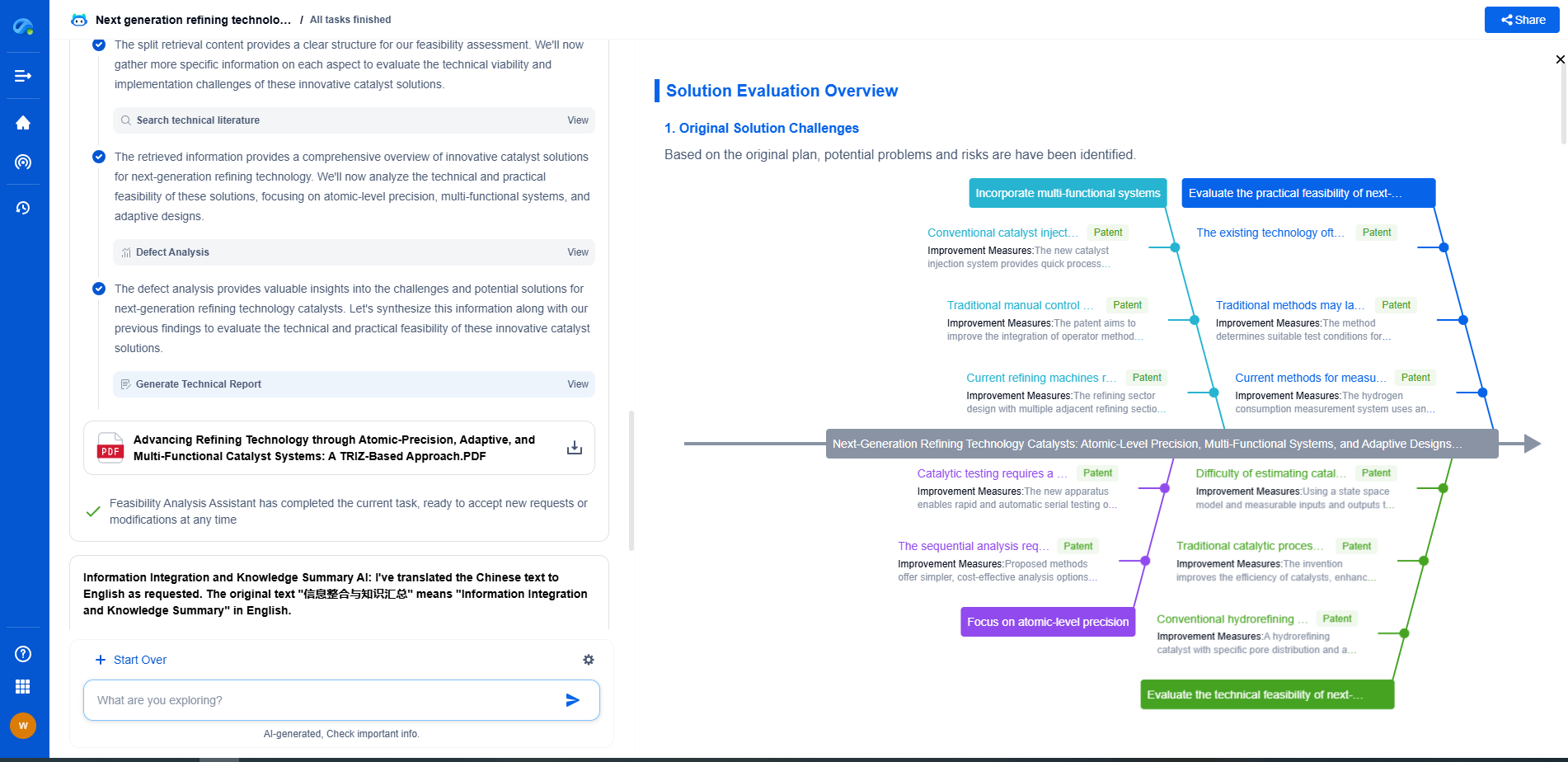Recycling Perovskite Solar Cells: Challenges and Solutions
JUL 22, 2025 |
Perovskite solar cells have emerged as a promising contender in the renewable energy sector due to their high efficiency and low production costs. These cells are composed of a unique crystal structure that allows for exceptional absorption of sunlight and efficient conversion to electricity. Despite their potential, the lifecycle of perovskite solar cells poses environmental challenges, particularly in terms of recycling. This blog explores the challenges associated with recycling perovskite solar cells and potential solutions to these issues.
Challenges in Recycling Perovskite Solar Cells
Chemical Composition and Toxicity
One of the primary challenges in recycling perovskite solar cells arises from their chemical composition. Many perovskite cells contain lead, which presents significant environmental and health risks if not handled properly. The toxicity of lead is a major barrier to the safe disposal and recycling of these solar cells. Effective recycling processes must ensure that lead and other hazardous materials are safely extracted and reused or disposed of in an environmentally responsible manner.
Complex Layer Structure
Perovskite solar cells consist of multiple layers, each made from different materials, which complicates the recycling process. The separation of these layers is necessary to recover valuable materials, but current techniques are often inefficient and costly. This complexity requires advanced technological solutions to effectively dismantle the cells and recover the materials without degrading their quality.
Lack of Standardized Recycling Protocols
Another significant challenge is the absence of standardized recycling protocols for perovskite solar cells. Unlike silicon-based solar cells, which have established recycling methods, the relatively new perovskite technology lacks comprehensive guidelines. This lack of standardization hampers large-scale recycling efforts and the development of efficient processes that can be universally applied.
Solutions to Recycling Challenges
Development of Non-Toxic Materials
Efforts to address the toxicity challenge include the development of lead-free perovskite materials. Research is underway to replace lead with less harmful elements such as tin or bismuth, which could mitigate environmental risks. These alternative materials must retain the high efficiency of traditional perovskites to gain widespread adoption.
Innovative Recycling Technologies
To address the complex layer structure, innovative recycling technologies are being explored. For instance, solvent-based methods can effectively separate layers without degrading the materials. Additionally, thermal and mechanical processes are being developed to enhance material recovery. Research into these technologies is crucial to creating a viable recycling infrastructure for perovskite solar cells.
Establishing Recycling Protocols
The creation of standardized recycling protocols is essential for the widespread adoption of perovskite solar cells. Collaboration between industry stakeholders, researchers, and policymakers is necessary to develop guidelines that ensure safe and efficient recycling. These protocols should address the entire lifecycle of the cells, from production to end-of-life management, to maximize sustainability.
Encouraging Industry Collaboration
Industry collaboration plays a key role in overcoming recycling challenges. By sharing knowledge and resources, companies can develop more effective recycling strategies. Partnerships between manufacturers, recycling companies, and research institutions can drive innovation and foster the development of sustainable recycling solutions.
Conclusion: A Sustainable Future for Perovskite Solar Cells
Recycling perovskite solar cells presents notable challenges, but it is a crucial step towards achieving sustainable energy solutions. By addressing the toxicity of materials, developing innovative recycling technologies, and establishing standardized protocols, the renewable energy sector can mitigate environmental impacts and promote ecological balance. Encouraging industry collaboration and continued research will pave the way for a future where perovskite solar cells contribute significantly to global energy needs without compromising environmental integrity.
As solar technology races ahead—from perovskite cells to tandem architectures, from anti-reflective coatings to transparent electrodes—staying on top of fast-moving innovation has become a strategic imperative.
Patsnap Eureka, our intelligent AI assistant built for R&D professionals in high-tech sectors, empowers you with real-time expert-level analysis, technology roadmap exploration, and strategic mapping of core patents—all within a seamless, user-friendly interface.
⚡ Ready to accelerate your solar innovation journey? Try Patsnap Eureka today and let AI help you harness the full power of the sun—and your IP strategy.
- R&D
- Intellectual Property
- Life Sciences
- Materials
- Tech Scout
- Unparalleled Data Quality
- Higher Quality Content
- 60% Fewer Hallucinations
Browse by: Latest US Patents, China's latest patents, Technical Efficacy Thesaurus, Application Domain, Technology Topic, Popular Technical Reports.
© 2025 PatSnap. All rights reserved.Legal|Privacy policy|Modern Slavery Act Transparency Statement|Sitemap|About US| Contact US: help@patsnap.com

